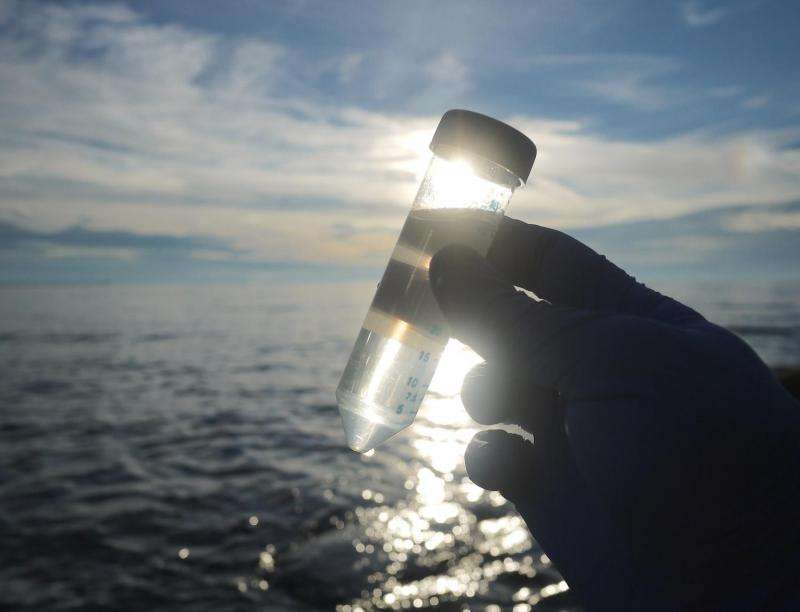To understand the oceans' microbes, follow function, not form

A University of British Columbia mathematician may have discovered a key to understanding the constantly changing distribution of microbial species in the world's oceans—classify microorganisms by their biochemical function, rather than by their taxonomy.
Researchers have struggled to understand what determines the distribution of microbial species across space and time—the effort is severely hindered by the sheer number of microbial species and the complexity of their communities. Even similar environments, such as distinct ocean basins at similar latitudes, can harbour very different microbial species.
In new research published in Science, UBC researchers Stilianos Louca, Laura Parfrey and Michael Doebeli, meticulously classified over 30,000 different microbial species found across the Earth's oceans.
But instead of species, they classified microbes by 'functional groups' such as phototroph (organisms that use light for energy) or sulfide oxidizer (organisms that eat highly toxic sulfide).
"This really enabled us to bring order to the ocean's microbial chaos," says Louca. "The function of marine microbial communities appears to be closely tied to their environment."
The approach enabled Louca and his colleagues to predict the distribution of microbial functional groups based on a handful of physical and chemical variables, such as ocean depth and temperature. Even more surprisingly, they found that the species composition within the individual functional groups is largely unpredictable.
Microorganisms are the most ancient, diverse and abundant life form on Earth. Although invisible to the naked eye, these microorganisms form the energetic basis of the entire food web in the world's oceans. Through their biochemical activity, microorganisms drive the majority of elemental cycles and the production of potent greenhouse gases, such as nitrous oxide and methane, thereby affecting ocean chemistry and climate.
Despite an enormous microbial diversity, the bulk of microbial biochemical functions in the global ocean is driven by a small number of metabolic pathways that are encoded by just a few genes. These genes are found in multiple alternative microbial species, which can substitute each other while performing the same functions.
Next, Louca and his colleagues want to find out what drives the puzzling variation of species performing the same function, and whether this matters at all to our ocean's biochemistry. Louca suspects that interactions between organisms that are not directly related to metabolic function, such as infection by viruses or 'chemical warfare' between microbes, may be causing this variation of species that cannot be explained based on environmental conditions. The novel techniques developed by Louca and his colleagues will allow scientists around the world to better understand the processes that shape microbial communities, which form the basis of life on Earth.
More information: S. Louca et al. Decoupling function and taxonomy in the global ocean microbiome, Science (2016). DOI: 10.1126/science.aaf4507
Journal information: Science
Provided by University of British Columbia



















